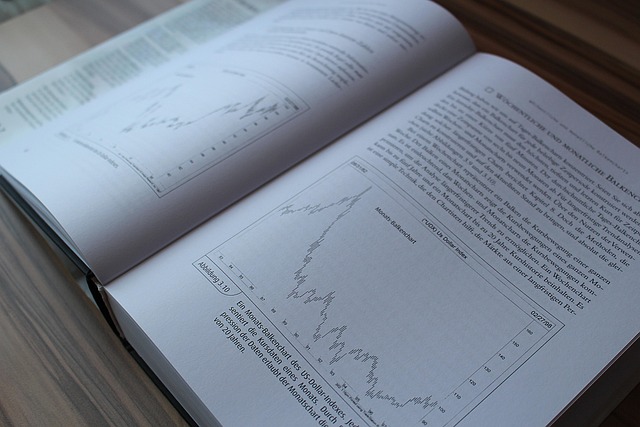Master Your Markets: The Best Crypto Trading Books of All Time and How to Use Them
Author: Jameson Richman Expert
Published On: 2025-11-21
Prepared by Jameson Richman and our team of experts with over a decade of experience in cryptocurrency and digital asset analysis. Learn more about us.
Looking for the best crypto trading books of all time? This comprehensive guide reviews timeless trading classics and crypto-specific titles, explains why each book matters for cryptocurrency traders, provides a recommended reading order, and offers actionable strategies to apply the lessons to volatile crypto markets. Whether you’re a beginner learning the basics or an experienced trader refining risk management and on-chain techniques, this article collects the essential reading and practical next steps to level up your trading.

Why reading trading books still matters for crypto traders
Books provide depth, historical perspective, and frameworks that short-form content and social media rarely deliver. The crypto market is unique — extreme volatility, 24/7 trading, frequent news-driven moves, and new instrument types — but the core disciplines of trading (psychology, risk management, technical analysis, and market structure) still apply. The best crypto trading books of all time blend classical trading wisdom with crypto-native insights, helping traders avoid common behavioral mistakes and design repeatable systems.
Key benefits
- Foundational frameworks: Books teach repeatable decision-making frameworks rather than one-off tips.
- Psychology and discipline: Long-form works explain mindset, emotional control, and consistency.
- Technical and fundamental depth: Books often present methods, mathematics, and case studies you can apply directly.
- Reference value: You can revisit chapters as your strategies mature.
How I chose the best books
To create a list of the best crypto trading books of all time I used these criteria:
- Enduring relevance: books that remain useful despite market changes.
- Applicability to crypto: either directly about crypto or easily translated to cryptocurrency markets.
- Clarity and actionable content: practical takeaways, not just theory.
- Author credibility and historical impact.
Curated list: The best crypto trading books of all time (with how to use them)
Below are essential books organized by category: trading psychology and behavior, technical analysis and market structure, value/long-term investing, and crypto-specific works. For each title I summarize key takeaways and how to apply them to cryptocurrencies.
Trading psychology and behavior
1. Trading in the Zone — Mark Douglas
Why read it: One of the best books on trader psychology, focusing on probability, belief systems, and emotional control.
How it applies to crypto: Crypto traders face frequent large price swings; Douglas’s lessons on mindset, acceptance of loss, and consistent process are vital to avoid revenge trading and overleveraging.
Key takeaways: Embrace a probabilistic mindset, develop consistent routines, separate ego from outcomes.
2. Market Wizards — Jack D. Schwager
Why read it: Interviews with top traders reveal varied strategies and risk approaches. The book demonstrates there is no single “right” path.
How it applies to crypto: Learning how successful traders manage risk, position size, and adapt strategies helps traders design robust crypto methods amid structural market differences.
Key takeaways: Focus on process, risk limits, and continuous learning. Emulate systems rather than personalities.
Technical analysis and market structure
3. Technical Analysis of the Financial Markets — John J. Murphy
Why read it: A comprehensive reference for charting, indicators, trends, and inter-market relationships.
How it applies to crypto: Use classical chart patterns, indicators, and volume analysis while adjusting parameters for crypto’s higher volatility and 24/7 market hours.
Key takeaways: Understand trend identification, support/resistance mapping, and indicator interpretation — but validate signals with volume and context.
4. A Complete Guide to Volume Price Analysis — Anna Coulling
Why read it: Focuses on the relationship between price action and volume, crucial in markets where liquidity and whale moves matter.
How it applies to crypto: On-chain activity and exchange flows often precede big moves. Integrate volume analysis with on-chain indicators.
Market narrative and history
5. Reminiscences of a Stock Operator — Edwin Lefèvre
Why read it: A semi-biographical classic illustrating cycles of greed, fear, and market euphoria.
How it applies to crypto: Crypto markets have repeated manias and blowoff tops; this book shows psychological traps and the importance of timing and risk control.
Value and long-term investing (useful for crypto allocation)
6. The Intelligent Investor — Benjamin Graham
Why read it: The foundational book on value investing and margin of safety.
How it applies to crypto: For long-term crypto investors, understand intrinsic value debates, portfolio allocation, and the case for cautious exposure to risky assets.
Key takeaways: Differentiate speculation from investment; a disciplined allocation and rebalancing process reduces catastrophic losses.
Crypto-specific essential reads
7. Mastering Bitcoin — Andreas M. Antonopoulos
Why read it: A technical but accessible explanation of Bitcoin’s protocol and ecosystem — critical for understanding the asset you trade.
How it applies to crypto: Knowing technical fundamentals helps you evaluate news, forks, upgrades, and how on-chain events may affect price.
Key takeaways: Learn wallet mechanics, blocks, consensus, and privacy concepts to avoid elementary mistakes and security risks.
Further reading on cryptocurrency fundamentals is available via the Wikipedia overview for Cryptocurrency.
8. Cryptoassets: The Innovative Investor’s Guide to Bitcoin and Beyond — Chris Burniske & Jack Tatar
Why read it: Offers frameworks for valuing cryptoassets, portfolio construction, and sector classification (currency, platform, tokenized asset).
How it applies to crypto: Use the book’s taxonomy and valuation frameworks when building diversified portfolios across Bitcoin, smart-contract platforms, and utility tokens.
9. The Age of Cryptocurrency — Paul Vigna & Michael J. Casey
Why read it: A readable history of Bitcoin and early crypto developments, useful to contextualize market cycles and adoption narratives.
10. Digital Gold — Nathaniel Popper
Why read it: Narrative history that explores early adopters, ideological drivers, and institutional interest, helping traders anticipate adoption-driven moves.

How to read these books effectively (actionable reading plan)
- Start with mindset and risk: Read Trading in the Zone and Market Wizards first to anchor psychology and risk thinking.
- Learn technical foundations: Work through Murphy and Coulling for practical charting skills and volume-price context.
- Study crypto fundamentals: Read Mastering Bitcoin and Cryptoassets to connect on-chain fundamentals to price drivers.
- Apply and test: Use demo accounts to practice strategies without capital risk. For a practical guide to demo accounts, see this demo account guide for traders.
- Journal and iterate: Keep a trade journal and revisit books when you encounter recurring mistakes.
Link: What is a demo account — practical guide for traders
Translating classic trading lessons to the crypto market
Classic trading books were written for equities, futures, and forex markets, but their frameworks can be adapted to cryptocurrencies. Here are practical adjustments:
- Use wider stop-losses and smaller position sizes: Crypto’s higher volatility demands more conservative position sizing relative to stop distance. The Kelly Criterion and fixed fractional sizing are covered in many trading books — use them but adjust volatility assumptions.
- Prefer probability over certainty: Trading in the zone emphasizes process-driven, probabilistic thinking. In crypto, avoid “this will 10x” certainties; instead assign probabilities and size positions appropriately.
- Incorporate liquidity analysis: Some altcoins have thin order books — measure slippage risk before entering large positions. Books on market microstructure and volume analysis help here.
- Use on-chain data as a leading indicator: Crypto-native data (wallet flows, exchange inflows/outflows, active addresses) often presage price moves. Combine book-learned charting with on-chain evidence.
For a deeper look at altcoin cycles and when they outperform Bitcoin, review this guide on altcoin season: What is Altcoin Season? A complete guide for traders.
Practical exercises from the books — build muscle memory
Reading is insufficient without practice. Here are exercises drawn from the best crypto trading books of all time that you can implement this week:
- Set a risk per trade rule: Determine a fixed percentage of account equity you’ll risk per trade (e.g., 0.5–2%). Track adherence for one month as recommended in Market Wizards.
- Paper-trade setups: Use a demo account to test three setups from Technical Analysis of the Financial Markets — trend continuation, breakout, and mean-reversion. Log results.
- Journal emotion vs. outcome: After each trade record your mindset (confident, anxious, revenge-driven). Review after 50 trades to identify patterns (from Trading in the Zone).
- On-chain confirmation: When price breaks key levels, check exchange flows or active addresses as additional confirmation (practice from crypto-specific texts).
- Backtest simple rules: Backtest a single moving-average crossover on Bitcoin with volume filter. Record win rate, drawdown, and Sharpe ratio.

Tools, platforms and where to practice (recommended)
Books teach the "why" and "how"; you still need practical tools to execute. Here are recommended platforms and resources — both for demo/practice and live trading. (If you sign up through the referral links below you may receive benefits from the exchange.)
- Create a Binance account — broad liquidity, wide range of pairs, futures and spot markets.
- Open a MEXC account — margin and derivatives markets with competitive fees.
- Register with Bitget — good for copy trading and derivatives access.
- Join Bybit — strong derivatives platform with advanced order types and testnet options.
Note: Always read each exchange’s terms and avoid excessive leverage until you’ve built consistent profitability on a demo account or with small sizes.
Measuring improvement: metrics to track (learned from the books)
Measure performance using the following KPI’s referenced across trading literature:
- Win rate: Percentage of profitable trades.
- Profit factor: Gross profit divided by gross loss.
- Average risk-to-reward ratio: Average win divided by average loss.
- Max drawdown: Largest peak-to-trough decline — key for survival.
- Expectancy: (Win rate x Avg win) – (Loss rate x Avg loss).
These metrics convert book theory into measurable improvements. For reading that discusses portfolio expectations and risk math, see Wikipedia’s portfolio finance and Investopedia’s pages on risk management.
Case study: Applying book frameworks to an ETH trade
Here’s a simplified example showing how to apply lessons from the best crypto trading books of all time to a specific trade idea on Ethereum (ETH):
- Signal identification (Technical Analysis): ETH breaks above a long-term resistance on daily charts with increasing volume (Murphy + Coulling principles).
- On-chain confirmation (Crypto fundamentals): Exchange outflows increase and active addresses rise, indicating accumulation (Mastering Bitcoin + Cryptoassets frameworks).
- Position sizing (Market Wizards): Risk 1% of account on a stop below recent swing low; set position size accordingly.
- Psychology (Trading in the Zone): Enter with a pre-defined exit plan to avoid emotional exit management.
- Monitor narrative: Watch ETH upgrade or regulatory news that can change market behavior. For current ETH market outlooks and longer-term scenarios, see this ETH price prediction and 2025 outlook and realistic scenarios.
Read ETH outlook resources: ETH price prediction and weekly outlook (2025) and How much will Ethereum cost in 2025 — realistic outlook.

Advanced reading and research techniques
Once you’ve digested the essentials, expand into advanced topics:
- On-chain analytics: Learn to read flows, tokenomics, and distribution metrics from sources like Glassnode and Coin Metrics.
- Derivatives and implied volatility: Study options valuation and funding rate dynamics to trade volatility (seek books or papers on options theory).
- Algorithmic strategies: Learn programming basics and backtesting frameworks to automate repeatable edge testing.
Use reputable education resources to supplement books. For a broad primer on cryptocurrency technology and market context, see the Wikipedia page on Cryptocurrency and Investopedia’s articles on technical analysis.
Common mistakes new traders make (and book-based fixes)
New crypto traders often repeat the same mistakes described across trading literature. Here are common errors and the book-based fixes:
- Overleverage: Fix: Apply strict position sizing rules from Market Wizards and Trading in the Zone.
- No plan or exit rules: Fix: Define entries, stops, and profit targets before entering — practice in a demo account first.
- Following the herd: Fix: Validate moves with on-chain and volume evidence; focus on process rather than hype (Reminiscences of a Stock Operator shows herd behavior pitfalls).
- Ignoring liquidity: Fix: Measure order book depth and expected slippage; smaller positions in illiquid altcoins.
Reading order recommendation by experience level
To get the most from the best crypto trading books of all time, follow this recommended sequence:
Beginners
- Trading in the Zone (mindset)
- Mastering Bitcoin (technical fundamentals)
- Technical Analysis of the Financial Markets (foundations)
Intermediate traders
- Market Wizards (practical insights)
- Cryptoassets (valuation frameworks)
- Volume and liquidity-focused books
Advanced traders
- Options and derivatives textbooks
- Algorithmic trading and backtesting guides
- Specialized on-chain research papers

Where to find high-quality continuing education
Beyond books, high-quality sources include peer-reviewed papers, in-depth market reports, and reputable data providers. Use educational platforms and official documentation (e.g., Ethereum Foundation) to keep technical knowledge current.
When assessing price expectations and macro-driven scenarios, complement book-based study with regular market briefings and scenario analysis such as those found in Ethereum outlook articles linked above. For practical guides and weekly outlooks on ETH, consult the ETH price prediction and outlook references previously cited.
Final checklist: Put book knowledge into practice
- Choose a learning path: beginner → intermediate → advanced.
- Pick three books and finish them within 90 days; take notes and extract 10 actionable rules.
- Open a demo account and simulate the rules for 50 trades. (See the demo account guide linked earlier.)
- Track KPIs (win rate, profit factor, drawdown) and iterate rules based on data.
- Fund a live account only after consistent demo/live record with controlled risk.
Further reading and references
Essential external resources and educational sites:
- Cryptocurrency — Wikipedia (technical and historical overview)
- Technical analysis — Wikipedia (foundations of charting)
- Investopedia — Risk Management (practical risk rules)

Conclusion — Which book should you start with?
If you must pick one book today from the best crypto trading books of all time, start with Trading in the Zone for mindset, then read Mastering Bitcoin to ground yourself in crypto fundamentals. From there, expand into technical analysis and crypto valuation texts. Combine reading with disciplined practice using demo accounts and measured exposure on reputable exchanges (see recommended platforms links above). The combination of timeless trading discipline and crypto-specific knowledge is the fastest path to consistent performance.
Start building your toolkit today: practice on a demo account, measure results, and read deliberately. For practical demo account steps, visit this demo account guide: What is a demo account — practical guide for traders. To deepen your understanding of altcoin cycles and ETH outlooks referenced in book frameworks, read these guides: What is Altcoin Season — complete guide, ETH price prediction and weekly outlook, and How much will Ethereum cost in 2025 — realistic outlook.
Ready to trade? Consider practicing on reliable exchanges: Binance, MEXC, Bitget, and Bybit. Use small sizes, demo testing, and a book-backed plan before scaling live capital.
Good reading — and disciplined trading. The best crypto trading books of all time will shape your approach for years; apply their lessons, test them in the markets, and adapt as crypto evolves.